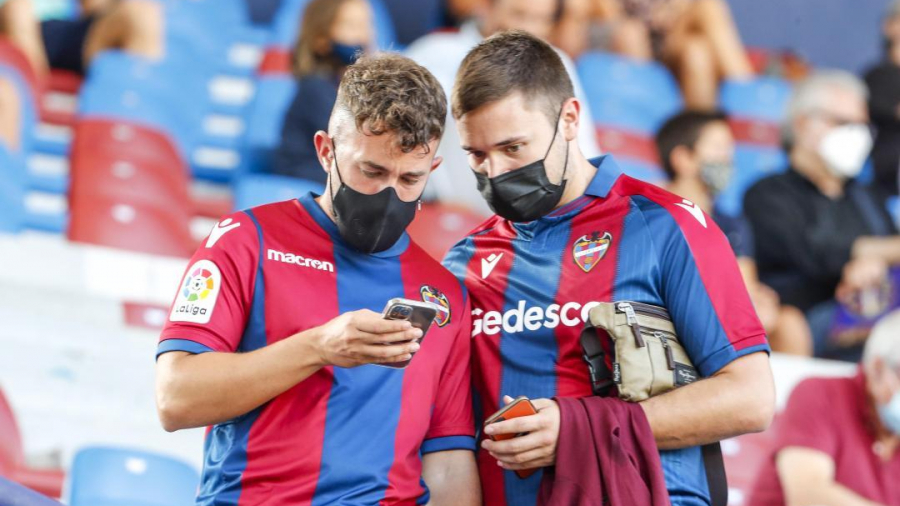
- Olivia Archanco, Consumer Strategy Director of LaLiga Tech, explained how LaLiga applies artificial intelligence (AI) in its relationship with fans, using the Fan Activation platform.
- This solution helps the company to improve its relationship and communication with fans, as well as generating a greater business impact by personalising experiences through data.
The sports and entertainment industry currently faces the challenge of intensifying, strengthening and transforming its relationship with fans in order to provide an effective response to the habits and needs of newer generations, as well as those of fans in general, encompassing all aspects of their favourite teams and players.
Artificial intelligence (AI) has a key role to play in the fan relationship and the growth of the industry. This technology, which is the result of combining algorithms designed to create systems that replicate human capabilities, is helping to improve the connection with fans, to be more relevant to different supporter segments, and to gain a better understanding of fans through data.
During an event organised by the Association for the Development of Customer Experience (DEC), a debate was held on how AI and automation are helping to achieve ongoing improvement of the customer experience. Olivia Archanco, Consumer Strategy Director of LaLiga Tech, took part in the event along with experts from a variety of sectors and presented the work carried out by LaLiga in this sphere and the role played by LaLiga Tech's Fan Activation platform in creating more personalised and relevant experiences.
Archanco stressed that LaLiga is carrying out data-based fan activation strategies, and that this requires a huge quantity of stored information: "Being able to carry out a data-based fan activation strategy has quite significant big-data requirements. To activate the campaigns and strategies, what's really important is being able to manage the data in an orderly manner, given that we're starting out with millions of digital signals and data points that enter our [digital] ecosystem."
Likewise, she noted that the Fan Activation platform is developed around the fan life cycle. "First of all, we seek to generate awareness and identify new audiences who we want to approach and subsequently introduce to our environments. For example, people in other countries who are not familiar with LaLiga, or users who are not aware of certain products or who we want to learn about certain aspects of our offering."
After the initial phase, the fan enters the engagement stage, followed by conversion and, finally, loyalty. "When working on generating customer awareness, tools are used that allow for the identification of new audiences, for example, through the DMP (Data Management Platform), and then we direct these audiences to the media to execute paid media campaigns and for users to end up accessing the specific digital environment we would like. That is where that engagement is generated; the point where the user begins to interact."
The next and final step is "measuring session duration, measuring if a registration occurs" or, in any event, asking ourselves "if now is the time to move them on to the next stage in the life cycle, which is conversion". This is where the objective set by the client occurs. "This objective might be a registration, a micro-conversion such as downloading an app, a subscription, or the purchase of a club season ticket or merchandise, such as a scarf or a shirt."
According to Archanco, once conversion has occurred, the goal is to expand the experience and get to know the fan better by encouraging them to complete their registration and provide relevant information for producing more personalised impacts. "This is where the work is done to obtain a new sale or perform cross-selling to complement the offering. This is the strategy that we implement in order to activate fans in an orderly and coherent manner", she adds.
These campaigns generate numerous registrations or leads, but users may fill out the information by quickly selecting any option in order to complete the registration. To improve this user experience, Fan Activation incorporates single-sign on, a single registration that allows the user to register just once and thereby access the client's entire digital ecosystem: from the different types of apps that may exist through to web and OTT platform products.
Fan Activation includes data on users' browsing habits and behaviour. "For example, we can know that the user lives in Spain, that they've told us their favourite team is Betis, but then we've inferred that their second favourite team is Real Madrid, which is the one they follow most and the one they're interacting with the most. We can also see that they're a heavy user and that they are at risk in another product, on the OTT platform, for example. We also know how many times they have opened our communications and that they have accessed the website at some point to consult the fixture schedule."
With all of this data, artificial intelligence algorithms are then incorporated for profiling tasks and to define a buyer persona, a process whereby the user is classified and extremely useful additional information is obtained. "Thanks to this process, we're able to figure out, for example, what their propensity to purchase is for sports, football, wines, and we have a score for which categories the user has greater affinity with. In short, we can find out in aggregate terms what type of behavioural traits they share with other users, which allows for the personalisation of experiences tailored to each fan's personality", she adds.
Another tool where artificial intelligence is applied is Content Moderator. It consists of an AI service which permits the automation of potentially offensive content, scanning images uploaded by fans and automatically flagging them. This permits greater personalisation for fans, because they can customise their fan profile avatar with their own image without the risk of inappropriate content being displayed.
With Send Time Optimization, used for email, push-notification and SMS campaigns, which are sent to users in a personalised way, AI is also used when evaluating historical data on a fan's different interactions with communications (deliveries, openings, clicks, cancellations, etc.). This makes it possible to establish the ideal receipt time for each user, in order to obtain a greater interaction rate.
LaLiga Tech also applies other types of characteristics when delivering LaLiga campaigns, such as engagement frequency, which allows for the analysis of data on each user's engagement with the communications and an analysis of their frequency. It is a model based on machine learning and artificial intelligence which scores the frequency of deliveries and participations, allowing for improved personalisation of campaigns, as well as the classification of users into three frequencies: saturated users, users with on-target frequency and undersaturated users.
"Being able to send highly personalised messages optimally and analysing each case individually means we can maximise participation rates and also reduce unsubscribing. It's important to manage marketing pressure so that it doesn't hinder the performance of the campaigns, while not missing out on opportunities," notes Archanco.
The success of AI in figures
Using algorithms and functions based on artificial intelligence has made the campaigns produced over the course of a season highly successful. "By comparing them with control groups, a multiplier effect is identified on the activity in each segment: In the case of heavy users, we managed to multiply their success threefold. For active users, the multiplier effect is twofold, and in inactive groups or segments at risk of churn an improvement in engagement of up to 36% is obtained, demonstrating the effectiveness of personalised campaigns in accordance with the fan's current life cycle stage."
This data management model has greatly benefitted LaLigaSports TV, LaLiga's OTT platform. “In total, we have managed to activate 320,000 users. We're not talking about opening a communication or clicks, but visits. Thanks to the email campaigns, these 320,000 users have accessed the platform and remained active."
Archanco adds that "in the case of heavy users, in addition to the threefold multiplier effect on user activity, we have produced an additional 104 days of usage for each heavy user. On average, we have generated 30 additional days of usage for these 320,000 users. The significance of these figures is highlighted by the fact that they have contributed to increasing the user lifespan by 11.3 million days. If we wanted to achieve similar figures through a paid campaign, based on the average fan acquisition cost, it would require an investment of €1.5 million. We are demonstrating that, thanks to personalisation, the campaigns are highly effective".
Finally, Archanco stressed the role of AI in the customer care service in order to offer a personal experience. "We have an omnichannel customer care service where we bring together all of the fan information (interactions, time spent on the website, access devices, communications opened, etc.), and this means that a much more valuable dashboard is displayed for the agent dealing with each case. Furthermore, it's extremely simple for fans to use email, WhatsApp or chat to connect with the agent, who is going to be able to attend to them much more efficiently. Through AI, the agent receives guidelines for activating the Next Best Action, (NBA), which identifies the best marketing action to offer the customer, thereby generating more sales opportunities."
